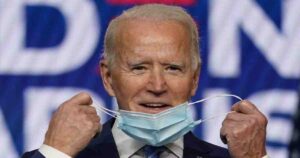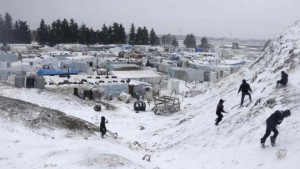Experts laid out different opinions on N.Korea’s complete re-entry capacity
Ha-young Choi
Pyongyang has successfully developed rocket re-entry technology for an intercontinental ballistic missile (ICBM), North Korea’s state-run Korean Central News Agency (KCNA) reported on Tuesday.
Kim Jong Un supervised a simulation test to verify the thermodynamic structural stability. The result satisfied all technical indexes, KCNA reported.
“We have proudly acquired the reentry technology, possessed by a few countries styling themselves as military powers, by dint of self-reliance and self-development, thus making great progress in the ballistic rocket technology,” said Kim, as quoted by the KCNA.
Kim Dong-yup, professor at the University of North Korean Studies in Seoul, said North Korea already has re-entry technology for short-range missiles, even though this may not enough for an ICBM. Short-range ballistic missiles (SRBM) such as Scuds also travel more than 100 kilometers from the ground before coming back to the earth.
“I think what North Korea developed for re-entry is in between an intermediate-range ballistic missile, which reaches 2,000-3,000 kilometers, and an ICBM, which reaches more than 10,000 kilometers,” Kim told NK News.
Jonathan McDowell from the Harvard-Smithsonian Center for Astrophysics said Pyongyang’s claim about the successful development of heat-shield material is possible, even though it’s hard to judge from the photos and rocket engine flame.
A rocket engine flame is actually not the same as the heat caused by re-entry, so it may not be a convincing test,” McDowell told NK News.
To complete the missile technology, a warhead has to come back down to earth. It needs to both be able to survive re-entry, which involves a very large amount of friction and heat, and to navigate during that phase to its target.
According to Kwon Se-jin, professor from the Department of Aerospace Engineering at KAIST, the carbon material surrounding the detonator must be strong enough to withstand 6,000 Celsius.
“It is difficult technology but the U.S. and Russia obtained this technology 60 years ago. It is not impossible for North Korea to develop it on its own,” Kwon told NK News.
Previously, experts have said that North Korea is not yet equipped with re-entry technology, even though it can place a satellite in orbit successfully. The South Korean Ministry of National Defense (MND) reiterated this, based on “ROK-U.S. intelligence sources.”
“Re-entry technology usually means carbon composite materials, ablation technology and terminal guidance technology, which could be confirmed by test launches,” a spokesperson told journalists.
“Ablation” means removal of materials from the surface of an object due to high temperatures or pressure, while “terminal guidance technology” refers to the capacity to guide a missile accurately to its target.
While Kim Jong Un has ordered a “nuclear warhead explosion test” and a “test-firing of several kinds of ballistic rockets” to improve the accuracy of its nuclear capacity, the MND said this doesn’t necessarily refer to a fifth nuclear test.
“A nuclear warhead explosion test is a required process to develop nuclear warhead missile,” spokesperson Moon Sang-gyun said at the regular press briefing.
Kim Dong-yup specified that a “nuclear warhead explosion test” is even possible indoors by heating the re-entry vehicle without nuclear material.
Considering Pyongyang’s previous remark on March 4, which included South Korea as a target of a missile attack, Kim indicated that now North Korea is considering various types of nuclear-armed missiles.
“So far, North Korea has always mentioned U.S. mainland as a nuclear target. Now it will test not only an ICBM but also Scud and Nodong missiles to be combined with nuclear weapons against South Korea,” Kim said.
The presence of of Kim Rak Gyom, commander of the Strategic Forces of the Korea People’s Army (KPA), the troop in charge of missiles, implies North Korea’s intent to carry out more tests.
North Korean media on March 4 revealed a newly developed large caliber multiple rocket launcher, intended to hit “South Korea’s strategic points.”
Meanwhile, the North Korean leader has recently appeared at more military-related sites. His last 10 appearances, including the last four in February, were all linked to the military.
“Ten consecutive military appearances for is unprecedented for Kim Jong Un,” said John Grisafi, NK News director of intelligence.
“The most he ever made before was nine in a row, from October 31-November 26, 2011,” Grisafi said. This was just before former North Korean leader Kim Jong Il, Kim Jong Un’s father, passed away on December 17. – NK News
(Ha-young Choi is an NK News correspondent based in Seoul. She studied Korean history, mainly focusing on modern Korean history at Korea University. Follow her on twitter @Hy_Choi0826)




